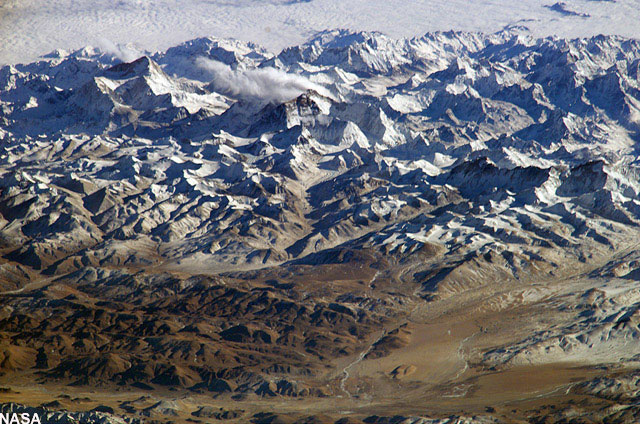Revealed: How Tibetans Survive Thin Air

If you moved to Tibet, you'd struggle with the altitude and might well get altitude sickness.
A study published May 13 in the journal Science reported that Tibetans are genetically adapted to high altitude. Now a separate study pinpoints a particular site within the human genome — a genetic variant linked to low hemoglobin in the blood — that helps explain how Tibetans cope with low-oxygen conditions.
The new study, in the Proceedings of the National Academy of Sciences, sheds light on how Tibetans, who have lived at extreme elevation for more than 10,000 years, have evolved to differ from their low-altitude ancestors.
Lower air pressure at altitude means fewer oxygen molecules for every lungful of air. "Altitude affects your thinking, your breathing, and your ability to sleep. But high-altitude natives don't have these problems," said co-author Cynthia Beall of Case Western Reserve University. "They're able to live a healthy life, and they do it completely comfortably," she said.
People who live or travel at high altitude respond to the lack of oxygen by making more hemoglobin, the oxygen-carrying component of human blood.
"That's why athletes like to train at altitude," Beall said. "They increase their oxygen-carrying capacity."
But too much hemoglobin can be a bad thing. Excessive hemoglobin is the hallmark of chronic mountain sickness, an overreaction to altitude characterized by thick and viscous blood. Tibetans maintain relatively low hemoglobin at high altitude, a trait that makes them less susceptible to the disease than other populations.
Get the world’s most fascinating discoveries delivered straight to your inbox.
"Tibetans can live as high as 13,000 feet without the elevated hemoglobin concentrations we see in other people," Beall said.
To pinpoint the genetic variants underlying Tibetans' relatively low hemoglobin levels, the researchers collected blood samples from nearly 200 Tibetan villagers living in three regions high in the Himalayas. When they compared the Tibetans' DNA with their lowland counterparts in China, their results pointed to the same culprit — a gene on chromosome 2, called EPAS1, involved in red blood cell production and hemoglobin concentration in the blood.
Originally working separately, the authors of the study first put their findings together at a March 2009 meeting at the National Evolutionary Synthesis Center in Durham, NC. "Some of us had been working on the whole of Tibetan DNA. Others were looking at small groups of genes. When we shared our findings we suddenly realized that both sets of studies pointed to the same gene — EPAS1," said Robbins, who co-organized the meeting with Beall.
While all humans have the EPAS1 gene, Tibetans carry a special version of the gene. Over evolutionary time individuals who inherited this variant were better able to survive and passed it on to their children, until eventually it became more common in the population as a whole.
"This is the first human gene locus for which there is hard evidence for genetic selection in Tibetans," said co-author Peter Robbins of Oxford University.
Researchers are still trying to understand how Tibetans get enough oxygen to their tissues despite low levels of oxygen in the air and bloodstream. Until then, the genetic clues uncovered so far are unlikely to be the end of the story. "There are probably many more signals to be characterized and described," said co-author Gianpiero Cavalleri of the Royal College of Surgeons in Ireland.
For those who live closer to sea level, the findings may one day help predict who is at greatest risk for altitude sickness. "Once we find these versions, tests can be developed to tell if an individual is sensitive to low-oxygen," said co-author Changqing Zeng of the Beijing Institute of Genomics.
"Many patients, young and old, are affected by low oxygen levels in their blood —perhaps from lung disease, or heart problems. Some cope much better than others," said co-author Hugh Montgomery, of University College London. "Studies like this are the start in helping us to understand why, and to develop new treatments."
- Gallery: Everest Expedition
- Which Mountain Is the Tallest in the World?
- How Did the Tibetan Plateau Form?



